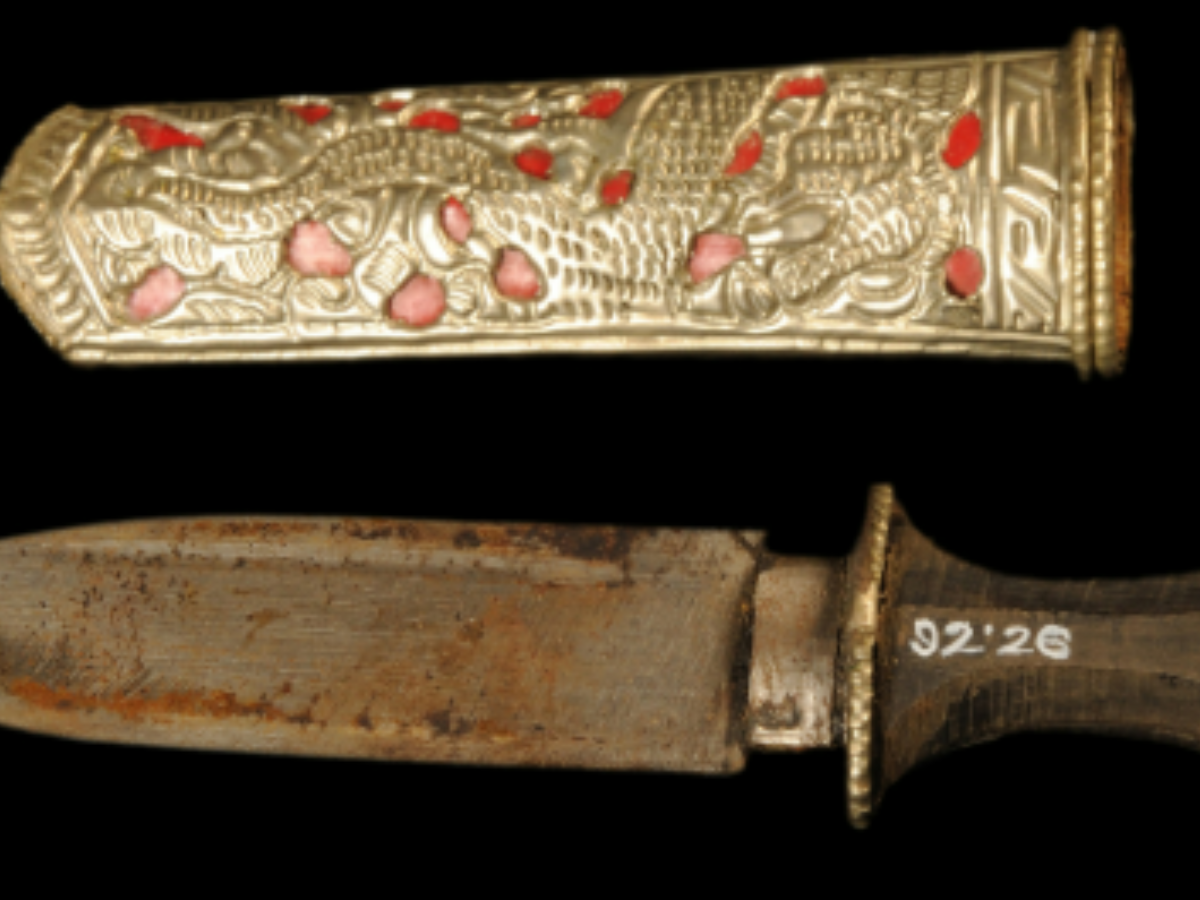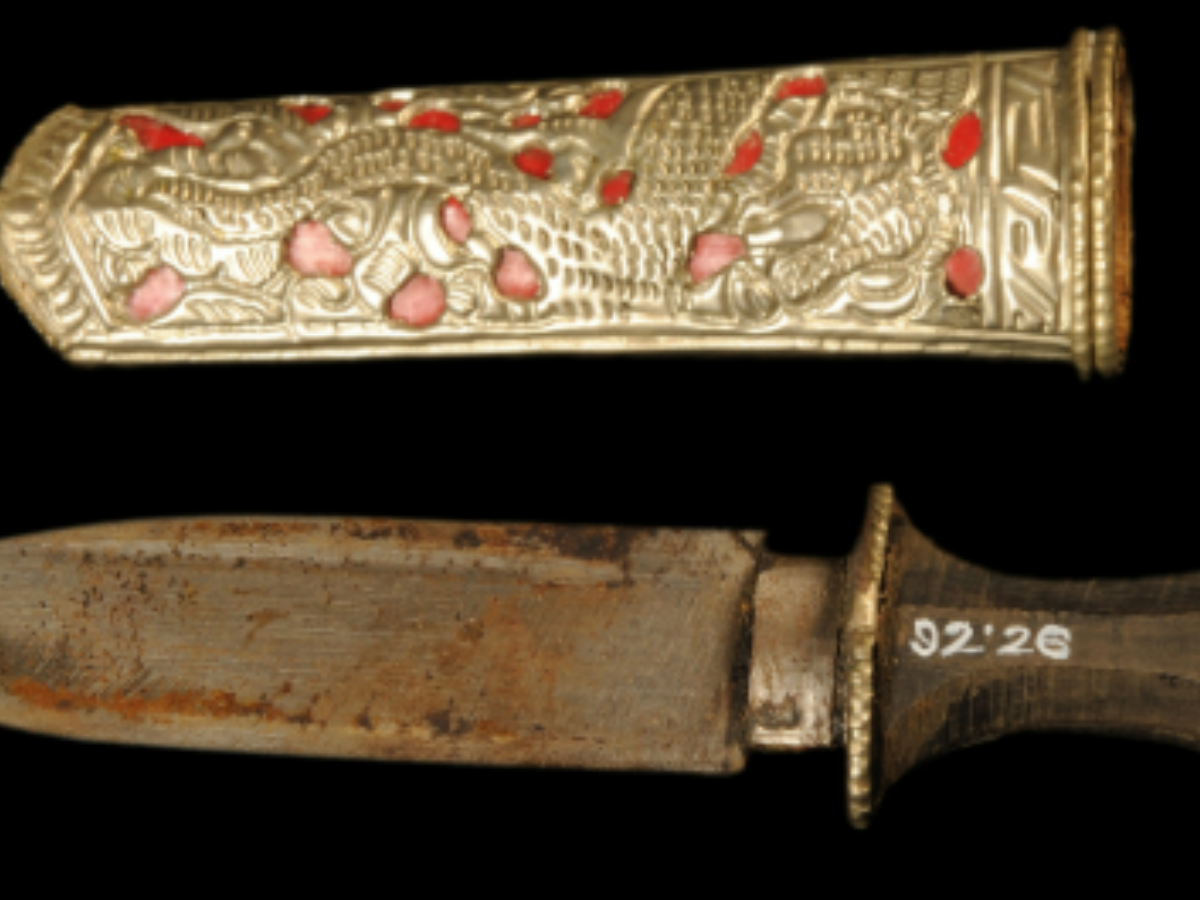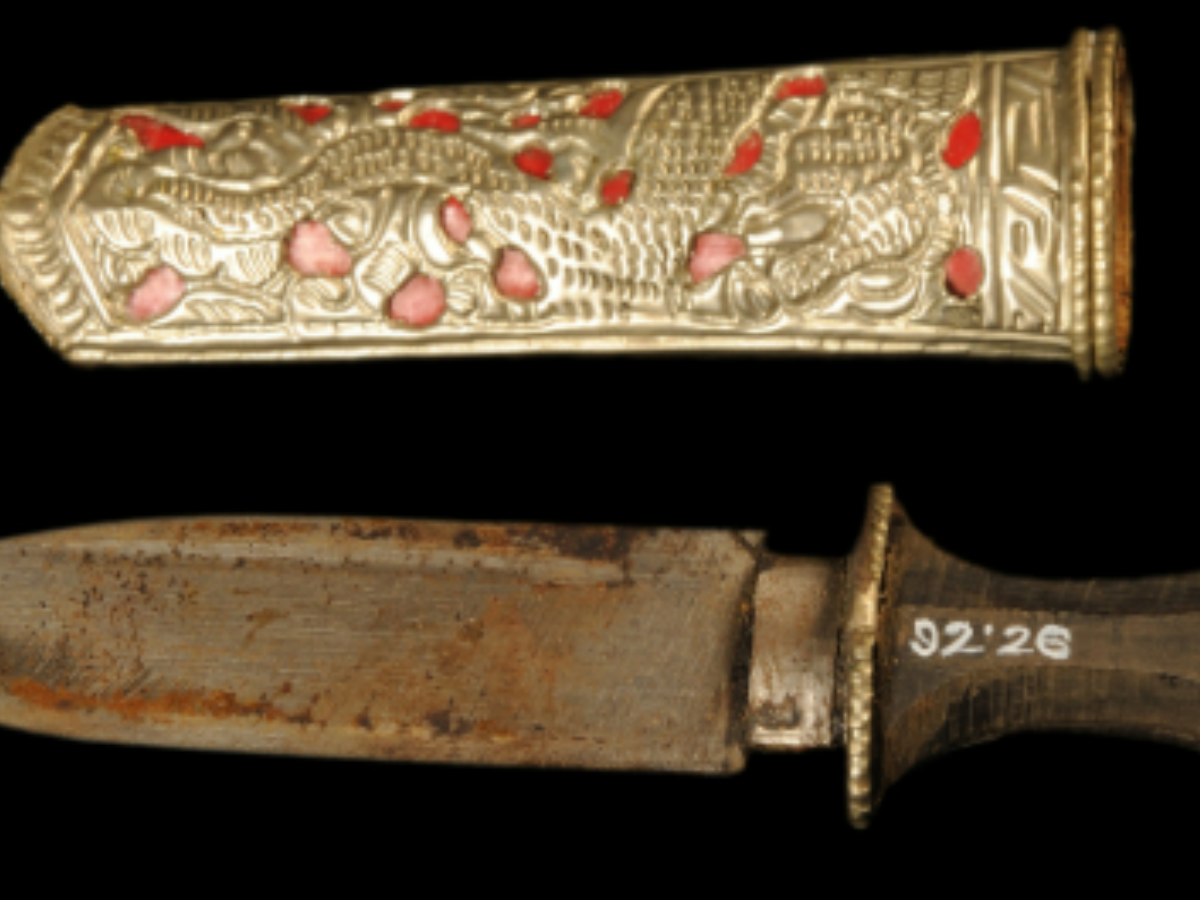State
Tribe Name
Art Type
short description
The Dojung knife belongs to the Bhutia tribe, a native community residing mostly in Sikkim. They are popular in the handiworks and weapons collections and hold the Dojung in high esteem due to its cultural and practical significance in their everyday lives.
Thumbnail

Filter Postion
Left
Filter Background
Off
Theme
Filter Header Image

content
Image

description
The Dojung knife belongs to the Bhutia tribe, a native community residing mostly in Sikkim. They are popular in the handiworks and weapons collections and hold the Dojung in high esteem due to its cultural and practical significance in their everyday lives.
The small knife has a sharp and hard iron blade that is put to different uses like cutting and carving whatever is useful for day-to-day works. The wooden handle provides comfort while in use and adds some decorative details to the knife. The most beautiful part of the Dojung is the scabbard which is very elegantly designed for the purposes of protecting the blade of the knife and embellishing it appearance. These scabbards are primarily built out of wood or leather and often hand-painted with traditional designs like motifs, metalwork, or embroidery to showcase the art of the Bhutia tribe.
Knives like the Dojung, in ancient times, found usage not only as implements for daily chores but also in expression of status and identity. In quite a few instances, these were carried by warriors and associated with significant ceremonies. In our times, the Dojung has its place in Bhutia culture, and its making is an ancient craft passed from one generation to the next.
Right up to the present age, the Bhutia people have attempted to maintain their respect for traditional practices. The Dojung knife is therefore being used at home as well as in festivals for rituals and cultural programs to safeguard their own rich heritage.
The small knife has a sharp and hard iron blade that is put to different uses like cutting and carving whatever is useful for day-to-day works. The wooden handle provides comfort while in use and adds some decorative details to the knife. The most beautiful part of the Dojung is the scabbard which is very elegantly designed for the purposes of protecting the blade of the knife and embellishing it appearance. These scabbards are primarily built out of wood or leather and often hand-painted with traditional designs like motifs, metalwork, or embroidery to showcase the art of the Bhutia tribe.
Knives like the Dojung, in ancient times, found usage not only as implements for daily chores but also in expression of status and identity. In quite a few instances, these were carried by warriors and associated with significant ceremonies. In our times, the Dojung has its place in Bhutia culture, and its making is an ancient craft passed from one generation to the next.
Right up to the present age, the Bhutia people have attempted to maintain their respect for traditional practices. The Dojung knife is therefore being used at home as well as in festivals for rituals and cultural programs to safeguard their own rich heritage.
Image Mode
landscape
promoted
On
Verified
Off
